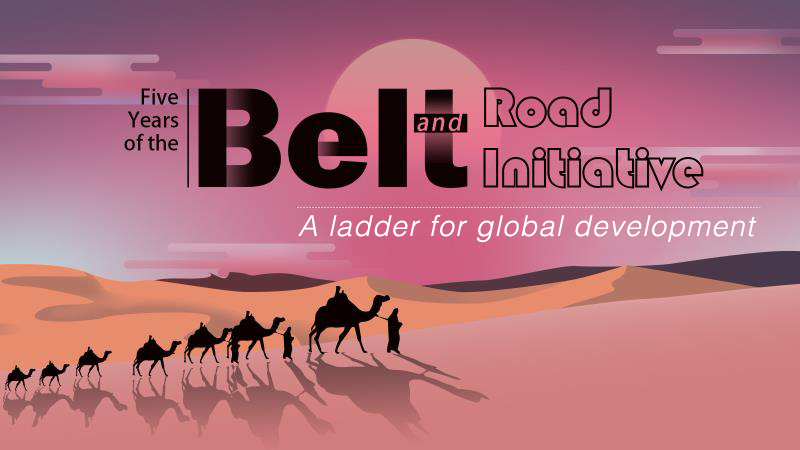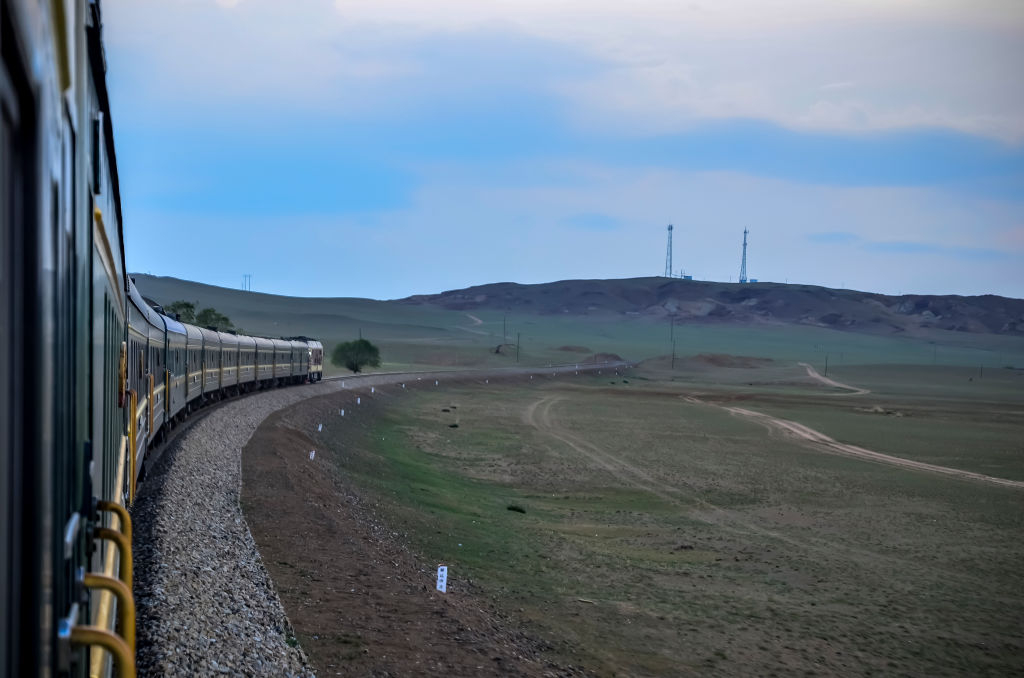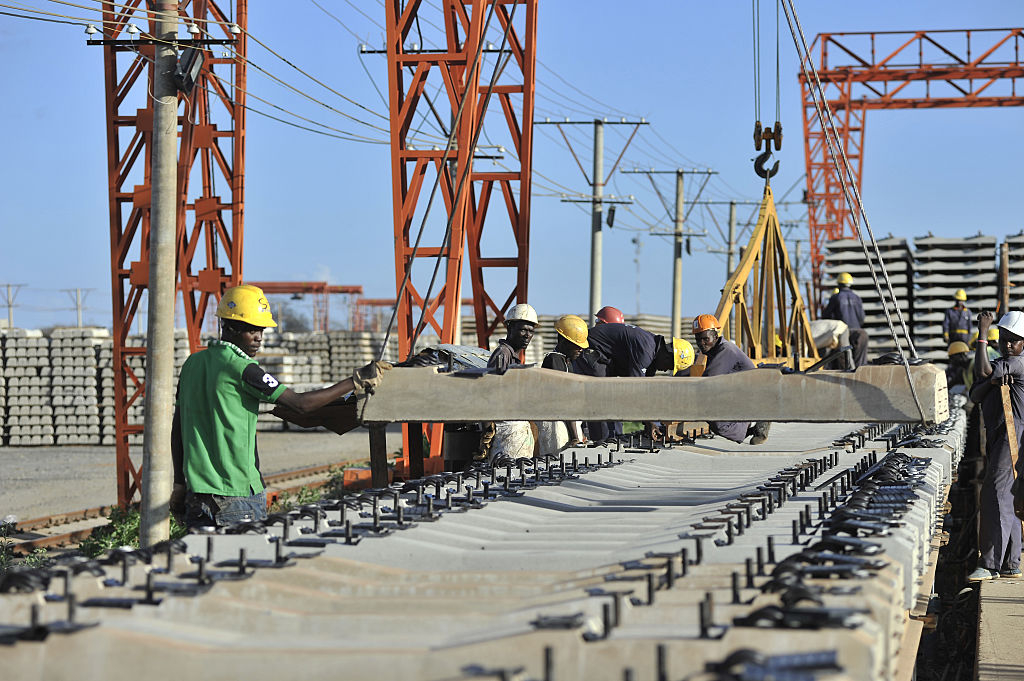
Opinion
20:30, 23-Apr-2019
BRI: A ladder for global development
Updated
15:36, 26-Apr-2019
CGTN

Editor's Note: With the Second Belt and Road forum for International Cooperation kicking off this week, the BRI has been thrust into the media limelight. What has been achieved in the past five years since the initiative was first put forward? How to turn the BRI vision into reality? Five Years of the Belt and Road Initiative is a book series co-published by Chongyang Institute for Financial Studies, Renmin University of China and Foreign Language Press, analyzing the initiative from the perspectives of policy communication, infrastructure connectivity, trade connectivity, financial integration and people-to-people connectivity. Here is an excerpt of the episode on infrastructure connectivity.
From the Moeris Reservoir of Ancient Egypt, the water systems of Ancient Rome, Dujiangyan irrigation system of old China, to the Beipanjiang Bridge, Hong Kong-Zhuhai-Macao Bridge and the Mombasa-Nairobi Standard Gauge Railway that China constructed in modern times, infrastructure is exerting profound impacts on human civilization.
In the past five years, the Belt and Road Initiative (BRI) has achieved broad progress in infrastructure connectivity. Major projects in the Six Economic Corridors are running smoothly.
For instance, initial preparations for the Moscow-Kazan high-speed-rail project and the Trans-Mongolian Railway (Aershan-Choibalsan section) have been completed. The China Railway Express exceeds 10,000 trains. The China-Myanmar gas and oil pipelines were completed in 2013 and 2017 respectively. The Addis Ababa-Djibouti Railway and the Abuja-Kaduna railway in Nigeria opened in 2017.
Moreover, Chinese companies have been playing an active role in the construction of over 20 ports in more than 10 countries, including the Gwadar port in Pakistan, the Kyaukpyu port in Myanmar, the Hambantota port and the Colombo port in Sri Lanka, and the Djibouti port in Africa.

Scenery along the route of the Trans-Mongolian Railway, June 2012. /VCG Photo
Scenery along the route of the Trans-Mongolian Railway, June 2012. /VCG Photo
In the aviation sector, China's civil aviation had established direct air travel to 43 BRI countries as of May 2017. In waterway logistics, China had signed bilateral maritime/river port agreements with 36 BRI countries as well as the EU and the Association of Southeast Asian Nations as of the same date.
A number of mature mechanisms and platforms serve as a guarantee for the connectivity of infrastructure. The Agreement for Further Cooperation on China-Europe Container Block Trains was clinched in April 2017. The founding of the Coordinating Council on China Railway Express Transportation and the Joint Working Group on China Railway Express Transportation marks the formal establishment of an international railway cooperation mechanism.
The positive impacts of these projects and mechanisms are becoming increasingly apparent. Take the Mombasa-Nairobi Standard Gauge Railway as an instance. The “century project” has shortened Mombasa-Nairobi journey from 10 hours to four, reducing logistical costs by 10 to 40 percent.
With the Addis Ababa-Djibouti Standard Gauge Railway put into commercial operations, the journey from Ethiopia to Djibouti has been reduced from one week to just one day. The railway also serves international humanitarian purposes, transporting more than 100,000 tons of food to Ethiopia during the drought.
Infrastructure connectivity has dramatically boosted employment opportunities in BRI countries. The construction of the Mombasa-Nairobi railway provided 40,000 jobs for local people. At present, more than 1,500 Kenyans are working on the railway's operations.
China is also sharing its technical experiences with local countries. China Road and Bridge Corporation established talent trading and trial bases along the entire Mombasa-Nairobi railway line. The theoretical study and field operations equipped local employees with skills to better construct and operate the railway, and better still, to better serve their local projects.

African workers at the construction site of the new Mombasa-Nairobi Standard Gauge Railway (SGR) line in Kenya, March 16, 2016. /VCG Photo
African workers at the construction site of the new Mombasa-Nairobi Standard Gauge Railway (SGR) line in Kenya, March 16, 2016. /VCG Photo
In addition to transportation infrastructure, Chinese companies have also invested heavily in industrial parks in BRI countries, aiming to increase their level of industrialization. The Eastern Industry Zone in Ethiopia, for instance, is home to 50 enterprises, six of which are foreign firms including Unilever.
The BRI is also a boon for multinational companies, of which the American company Caterpillar is a typical example. Thanks to the BRI, the company's sales in the Asia Pacific, Europe, Africa, and the Middle East accounted for 46 percent of its total sales, exceeding the North American market in 2017. In the same year, the growth rate of revenue from the Asia Pacific market reached 39.5 percent, the fastest among all its markets.
Infrastructure connectivity is the cornerstone of economic prosperity and social stability. While the existing assistance mechanisms are not supportive enough in scope, strength and continuity, the BRI has offered China's solution to the world.
To better promote infrastructure connectivity, consensus on green construction should be reached. All parties involved need to make full use of the existing mechanisms to promote the concept of green infrastructure construction. Unified environmental standards should also be set to ensure the sustainability of infrastructural development.
Stories in this series:
(If you want to contribute and have specific expertise, please contact us at opinions@cgtn.com.)

SITEMAP
Copyright © 2018 CGTN. Beijing ICP prepared NO.16065310-3
Copyright © 2018 CGTN. Beijing ICP prepared NO.16065310-3